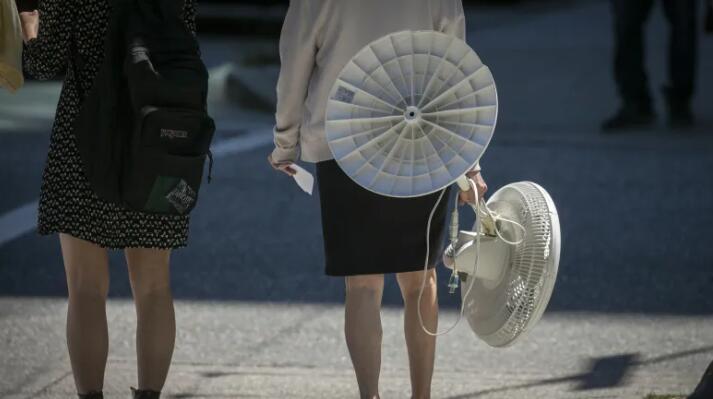Coalition on climate adaptation says Canada needs hard targets on disaster resilience

Call comes from diverse groups including Canadian Chamber of Commerce, local governments and researchers
A broad coalition on climate adaptation and disaster resilience says air conditioning should become a human right on par with winter heating — one of a series of hard targets it says Canada needs to meet in the next few years as climate change impacts increase.
“We’re focusing on the immediate term,” said Blair Feltmate, head of the University of Waterloo’s Intact Centre on Climate Adaptation.
“What is still missing with the federal government is a lack of a sense of the need to act with urgency.”
Feltmate’s institute is a member of Climate Proof Canada, a coalition whose members include the Insurance Bureau of Canada, Federation of Canadian Municipalities, Canadian Red Cross, Métis National Council, Canadian Chamber of Commerce, Forest Products Association of Canada and an array of research organizations and environmental groups.
As the federal government prepares its national adaptation strategy for later this fall, the coalition released a statement Monday on what it should contain — mostly, hard, short-term targets.
It says Canada should protect at least 35 per cent of the 840,000 homes at high risk of flooding by 2028. Those measures could run from changing how lots are graded to building berms, holding ponds and diversion channels or other natural infrastructure.

By 2028, the coalition says 15 per cent of communities at risk should have wildfire protection plans in place, 15 per cent of those homes should have protective retrofits and all new builds should be wildfire resilient.
Extreme heat has caused hundreds of deaths in recent years — 619 in British Columbia this summer alone, according to the provincial coroner. The coalition says Ottawa should commit to reducing such deaths by 70 per cent and related hospitalizations by 50 per cent over the next five years.
‘Actionable and doable things’
That may require measures such as requiring all buildings to have air conditioning, Feltmate said.
“We consider it a human right that people have warmth in the winter,” he said. “That’s a safety and security issue. It’s the same thing now for extreme heat in the summer.”
Feltmate said the recommendations are achievable and affordable.
“These are all actionable and doable things.”
- Air conditioning is a necessity, not a luxury — despite the emissions and energy costs, advocates say
- Hamilton woman fears summer of extreme heat with no AC in her apartment, city bylaw is no help
Air conditioning, he said, could be provided to those who need it for as little as $5 a month. Experience with programs such as Fire Smart, which educates homeowners on how to protect their homes against wildfires, shows that almost three-quarters of those who used the program incorporated at least two of its recommendations.
Feltmate said the federal government’s approach to climate adaptation has so far been too vague and too long-term. Most of its climate goals don’t have targets until 2030 or 2050, and that’s not fast enough, he said.
Ministry aware of ‘need to move quickly’
Federal Environment Minister Steven Guilbeault said his government is increasingly aware of the need to move quickly. But he said adaptation requires co-operation with provinces, municipalities, First Nations and other players, and is in many ways more complex than emissions reduction.
“We can’t just come up with a federal plan,” he said. “There’s a lot of people we need to engage with.”
Ottawa, for example, has little say in urban planning, which regulates how and where people build in places including floodplains.
But Guilbeault said hard federal targets, such as the ones the coalition proposes, are possible.
“We could do that,” he said. “That’s what we’re working toward.”
By 2050, most Canadian cities are forecast to see their maximum summer daily temperatures increase by up to five degrees Celsius. The number of days over 30 C will have doubled or even tripled and the length and frequency of heat waves will also increase.
“We know it’s coming,” Guilbeault said. “We’re not ready.”
Related News
Congress ups pressure to release boat strike video with threat to Hegseth’s travel budget
Stefani Reynolds/Bloomberg via Getty Images US lawmakers are trying to pressure the Trump administration toRead more
2 U.S. fighter jets fly over Gulf of Venezuela as lawmakers demand answers on boat strikes
The world’s largest aircraft carrier, the USS Gerald R. Ford, arrived in St. Thomas, U.S.Read more
